By Blaine Taylor
The strategies used by the rival combatants to plan and then fight what has come to be known as the French and Indian War on the North American Continent can best be seen in the light of various political, economic, military, geographic and population factors of the era in both New France and New England.
France in 1754 was governed by the system of absolute monarchy, the essence of which was King Louis XIV’s famous dictum, “I am the State,” and New France, in like fashion, was governed as a province of this absolute monarchy. This absolutism at home and in the colony abroad afforded the French a unity of action in war that the English would lack, since they must depend upon parliamentary majorities in London rather than on the King’s will alone to get things done.
In French Canada, the King’s will was expressed and carried out by a “troika” system of three-man rule. The troika is a Russian sled drawn by a trio of horses, and in its Canadian expression was reflected in three offices: Governor General, Intendant, and the Bishop of Québec.
The Governor General was always a Frenchman and was responsible for war, defense and diplomacy in the province; the Intendant was always Canadian-born, however, and was in charge of trade, economy and finance.
Thus, these two men shared the responsibility for the civil government. The third force—the Bishop of Québec—was the highest authority, and it was he who was ultimately responsible to the King, the Pope in Rome, and God in Heaven.
This rather tight unity of command, both in Old France and New France alike, meant that a uniform policy of defense and attack could be worked out and implemented; it accounts for much of the credit for the early French military victories in the war during the period 1754–1758. This unified chain of command was able to uniformly employ the military and economic resources of the empire in its defense and—for the most part at least—despite the bickerings between Vaudreuil and Montcalm in Canada, unity of planning and action prevailed throughout the war.
The British system, on the other hand, was different in many respects. First, England herself, unlike France, was not governed by an absolute, but by a constitutional monarchy, with Ministers dependent not upon the King’s will alone but upon a parliamentary majority, as it remains today, over two centuries later, even as the monarchy as an institution is itself in grave peril. In British North America, moreover, instead of one colonial administration as the French had in Canada, there were in place a full 13, each having its own governor, legislature, and church authorities.
The elected assemblies of British North America were unheard of in New France. There was no local self-government in Canada, no popular participation in the affairs of the province, and the only elected officials were the Captains of the Militia, voted into office by—their troops.
In the final analysis, this meant that the French had an extra dimension of unity of action over the English, for when money or supplies were needed for the war effort the French could quickly appropriate what was available, while the colonists in New England often hamstrung efforts in debates, and many times didn’t vote the credits necessary for their own defense!
Among the English a final, decisive unity of command did not really emerge until 1757, when the initial French victories were approaching their apex. After 1757, the English gradually began winning the war, with unity playing a major part in the shift.
Regarding the rival populations, according to historian Mason Wade, “There were only some 7,000 people in Quebec, and less than 500 in Acadia by 1675, despite Royal encouragement of immigration, early marriage, and large families during the previous decade. There were not then—and never were to be—enough men to implement the French claims to the vast expanses labeled New France on the map of North America.
“Between the Atlantic Seaboard and the Appalachian Barrier were confined the much more numerous and substantial Anglo-American settlements, and when the great struggle for the Continent opened in 1689, 200,000 English faced 10,000 French. In the final stage—the Seven Years’ War” (as the European part was called) “two million Anglo-Americans were arrayed against 75,000 French North Americans. The simple facts of population—plus the influence of recently-developed British seapower—settled the fate of New France.”
Reuben Thwaites, in his study of Canada, gives the colonial population of British North America in 1750 as “ about 1,375,000 souls.” In his excellent history of Canada, J. Bartlet Brebner lists population as New France’s greatest obstacle to victory: “Of all the problems which New France had to face, the most basic was the lack of manpower. Attempts to remedy this brought possibly 4,000 recruits from overseas between 1713–44, but natural increase was more rewarding, for the population rose from 18,119 in 1713 to 33,682 in 1730, and to about 45,000 in 1744.…”
The main reason for this difference in relative populations of the two rival colonial empires was economic. That of New France was based upon the lucrative fur trade (which required little manpower), while that of New England was anchored in agriculture and shipping (occupations requiring a great deal of manpower, on the contrary).
The first real settler of New France was Louis Hébert, a druggist by profession, not a farmer. Indeed, the first plow didn’t arrive in Canada until 1620, almost 150 years after Canada’s discovery. By 1636, there were still only two real families(!) of settlers in all of Québec Province, while 16,000 people had gone to the Massachusetts Bay Colony alone in New England between the years 1620–1650. In all, only six to seven thousand French migrated permanently to all of New France by 1757, during the very middle of the French and Indian War.
The most surprising element about this population comparison is the relative strengths of the two mother countries, France and England themselves. In 1750, there were 23 million French in France, while there were only seven-and-a-half million English in Great Britain. This means that the population ratio in North America could have been balanced equally if France were willing to make a commitment there.
France was not willing to make this commitment, however, and for two cardinal reasons: First, King Louis XIV was more concerned with the Continent of Europe than with Canada and, second, the French people themselves were too attached to France to leave it for Canada—“a few acres of snow” as the French philosopher Jean Jacques Rousseau derisively called it.
As to the economy, oddly enough, the Province of New France was governed from Paris by the French Ministry of Marine (the Department of Commerce’s equivalent in the United States). New France never became self-sufficient, as the 13 English colonies did (thus allowing them to break away from the mother country successfully during 1775–1781, as it turned out).
The only real continuing “crop” for export was the fur trade with Europe and, indeed, until the very fall of New France in 1760, foodstuffs were imported from abroad. In addition, Canada was inadequately funded from the beginning, although France itself was wealthy. Cardinal Richelieu spent only $13,000 on Canada in 1627, while the English spent five times that amount in the Massachusetts Bay Colony alone.
The other major export of New France—and an item that could also be used for home consumption—was the fish caught off the Great Banks of Newfoundland, but still this did not tip the scales in favor of a New French victory.
The development of effective British sea-power meant, ultimately, the isolation of New France from its source of supply. The difference between a supply fleet from France getting through the British blockade or not was the difference between the survival or death of New France for another year.
Militarily, by 1750, the French Army was superior to any other on the Continent of Europe—or at least was judged to be so by the knowledgeable experts of the time. The officers of the French Army—both in Europe and in North America—had a good rapport with their troops, as the French regiments were personally maintained, financially, by their leaders.
The first French regular army troops arrived in New France with Count Frontenac in 1641, 113 years before a similar arrival of British soldiers (with Braddock, in 1754). Frontenac, a nobleman, had led French troops in Holland, Germany, and Spain, fighting in the traditional European style. In 1641 Canada, the Count commanded the Saliers Regiment, which was comprised of 1,600–2,000 soldiers and was the backbone of New France’s fighting forces until the year 1760.
After his first encounter with hostile Iroquois Indians—and his exposure to forest warfare (a century before George Washington would learn the same lessons), Count Frontenac realized that European tactics of combat would not be successful in America. In effect, he reasoned correctly that the armies of Old France would have to become those of New France, adjusting to new tactics and conditions. Between 1641 and 1666, the French set about learning the art of “le pétit guerre” (“the little war”), the style of hit-and-run fighting in small unit actions that has been used very successfully all the way to our own time (notably by the Viet Minh against the French in 1954 and by the Viet Cong against the United States during 1961–1973).
In addition, the innovative count sprinkled his French officers among his various allied Indian tribes, and thus set up a vast forest communications network. These were used later to harass the English enemy, while the mainline, bulky regular formations of the French Army were held in reserve to protect New France from invasion and to strike major blows at New England.
During the decades of the 1650s and 1660s, terror tactics such as night raids made the colonial frontier between the two rival empires untenable and constantly menaced New England; this threat was not to be finally eliminated until New France herself was.
By 1754, then, more French than English regular troops were on the North American Continent. In addition, the French colonial militia was also better led and trained than was its colonial English counterpart. Militarism was popular in New France (as it never was to become in New England), and Canada herself was a garrison state à la Prussia in Europe, for defense against its southern neighbor. The military draft of the era took all males between the ages of 16 and 60, even priests, while “Militia Day” was a social occasion for the entire community.
By 1758, the following French troop organizations (by Regimental name) were ready for battle in Canada: La Reine, Bearn, Lanquedoc, Arand Bourgogne (at Louisbourg) all in 1755; in 1756, there were Royal Roussillon and La Sarre; in 1757, both 1st and 2nd Battalions Berry; and in 1758 Cambise and Leo Volontaires Estrangers (both at the Fortress of Louisbourg).
The quality and morale of the French troops were good, as evidenced in this account: “Upon their arrival at Brest, there was a renewal of the enthusiasm displayed by the troops sent to Canada in the previous year.… One officer, in fact, gave up his entire fortune to induce another to give his place in order that he might go to Canada.… Montcalm’s French regulars not only rivaled the Canadians in the endurance of cold, hardships and privation, but also worked hard to construct various fortifications and roads.…”
But the life of a French soldier—like the lives of all soldiers—was a hard one. Following is a description of the life of a French marine stationed at Louisbourg: “Nothing but drill and endless work on the fortifications, with miserly pay twice a year—and that often in arrears. They had issued him a coat, sleeved vest, breeches, hat, three shirts, a pair of gaiters, two pairs of socks, and two pairs of shoes with spare soles, and a black stock.
“When he needed new clothing—or was told he did—he was forced to buy it from officers, and it had been stripped from the bodies of men who had died in hospital. His haversack contained knife, fork and spoon, a wooden comb, awl, and needles. Soon he found that, lacking a greatcoat, he must wrap one or two of his three blankets around him when he mounted guard on the ramparts in freezing weather, musket clutched in freezing fingers.
“In the sour stench of the barracks, Jacques shared a bunk with a comrade, a bunk lined with hay changed only once a year and infested with vermin. No wonder he and others preferred to sleep in the open during summer.”
By 1758, there was a garrison of four thousand French regular troops in the fortress at Louisbourg and, according to author Duncan Grinnell-Milne (one of Gen. James Wolfe’s biographers), 16,000 troops at Québec, “out of a total of 22,000 in the whole country.” By September 1759, however, the effective troop strength at Québec was down to a force of four thousand because the rest had been shifted to either Montreal or elsewhere.
The main French military commanders throughout the war were Pierre, Marquis de Vaudreuil, Governor General of New France, 1755–1760; Louis Joseph, Marquis de Montcalm, Commander of the Army in New France, 1756–1759, and his successor, the Chevalier de Levis.
Noted one writer, “Only the audacity of French leadership, the use which the French made of Indian allies to supplement their scanty numbers, and their technical superiority at forest warfare … enabled them to delay the final decision as long as they did. Despite the daring efforts of Frontenac, Iberville and a host of lesser partisan leaders, the major factor contributing to the long-delayed decision was the disposition of almost all the Indian tribes except the Iroquois Confederacy to side with the French, who had from both religious and commercial motives always cultivated the friendship of the Indians, whereas the English had sought chiefly to exterminate them.
“From the beginning, the French were dependent upon the Indians, while the English warred relentlessly upon the ancient occupants of the land.”
To secure Indian aid, the French took the trouble to learn the Indian languages, something the English rarely did. The Indians provided part of the manpower reserve that the French had in other ways, while the English—in the 13 colonies—had an enormous reserve manpower capacity upon which to draw.
If the French were strong on land, however, they were weak at sea, and the correspondingly strong British Royal Navy—“the wooden walls of England”—gave the English a decided advantage in winning the war. For example, it was impossible to defend the strong French fortress at Louisbourg without a powerful French Navy to patrol the sea beyond its thick, stone walls.
But if New France was indeed a garrison state, the financial cost of maintaining the garrison became too high to pay, for its economy to support, and so New France has been characterized a society that collapsed under the weight of its own defense (à la the USSR in our own day).
We now turn to look at the rival English forces arrayed against those of New France.
States one account, “The men who won the British victory have received too much acclaim, for students of warfare have demonstrated that their talents were moderate. Once the overpowering British and colonial forces were set in motion with assurance of sustained support they could scarcely have failed.” How’s that for backward-looking armchair strategy?
Throughout the war the major English commanders were Gen. Edward Braddock; Sir William Johnson, the Earl of Loudon, Commander in Chief in North America, 1756–1757; his successor of 1758, James Abercromby; Robert Monckton, Brigadier General and Lieutenant Governor of Nova Scotia; Edward Boscawen, Vice-Admiral in Command of the Fleet at Louisbourg, 1758; Charles Saunders, Vice-Admiral in Command of the Fleet at Québec, 1759; Jeffrey Amherst, Commander in Chief in North America, 1759–1760; James Wolfe, Major General in Command of the Army at Québec, 1759; and Maj. Robert Rogers, Commander of Rogers’ Rangers.
In 1755, the British began making a substantial troop commitment in North America, with the following regiments of the British Army serving: 1st, 15th, 17th, 22nd, 27th, 28th, 35th, 40th, 42nd Highlanders, 43rd, 45th, 46th, 47th, 48th, 50th, 51st, 55th, 58th, 60th Royal Americans, 77th Highlanders, 80th Light Infantry, 90th, 95th Light Infantry, and Royal Artillery.
After the initial defeats of 1754–1758, indeed, even during their progress, Great Britain was committing herself to winning the struggle; however, it should be noted that, in 1754, English military might did not appear overwhelming.
“The nation was not then in fighting equipment … the army within the three kingdoms had been reduced to about 18,000 men. Added to these were the garrisons of Minorca and Gibraltar, and six or seven independent companies in the American colonies. Of sailors, less than 17,000 were left in the Royal Navy. Such was the condition of England on the eve of one of the most formidable wars in which she was ever engaged,” noted one account.
Added to the major English advantages over the French, though—population, economy, seapower, and eventual superiority of numbers of troops in the New World—there must also be mentioned the better training and drill of the British regular troops.
Tames Wolfe, more than any other officer in any other army of his day, drilled his troops in precision and disciplined volley-firing and close-order fighting, so that each man loaded and fired his weapon on command of voice or drumbeat. In close-order fighting, where the range was minimal and accuracy of aim unimportant, the effect was devastating. At the Battle of the Plains of Abraham, therefore, Wolfe could be relatively certain that his troops would win the day over the regiments of France.
The geographical factors determined—to a large degree—the nature and mode of fighting in the French and Indian War, and they must be assessed in any consideration of the overall rival strategies.
The war was fought along the Eastern Seaboard of the French Maritime Provinces (Nova Scotia/Acadia, New Brunswick, and Prince Edward Island, in Northeastern Canada); “Historic Canada” (Québec and Ontario); and in what is now the northern United States: New York, Maine, Illinois, and Michigan.
The landed settlement in Canada (New France) was basically limited to three major cities: Québec, Montreal, and Three Rivers (Trois Rivieres), and several small towns and trading posts (such as Tadoussac). This settlement was limited to a green band of land along the rim of a saucer formed by a low-lying, rugged mountain range along the St. Lawrence River, called the Laurentian Mountains or, more popularly, the Laurentian Shield.
Québec, founded in 1608 by the greatest French explorer and the father of New France—Samuel de Champlain—is located in the most defensible position in all of Québec Province, while Montreal, founded in 1642, is situated on a natural island in the center of the St. Lawrence River.
The classic invasion route—either into or out of Canada—is on this north-south axis: Hudson River-Lake Champlain-Lake George-Montreal-Three Rivers.
“Canada lay ensconced behind rocks and forests. All along her southern boundaries, between her and her English foes, lay a broad tract of wilderness, snaggy with primeval woods. Innumerable streams gurgled beneath their shadows; innumerable lakes gleamed in the fiery sunsets; innumerable mountains bared their rocky foreheads to the wind. These wastes were ranged by her savage allies … and no enemy could steal upon her unawares.”
Québec, the main bastion of French power in North America, was situated on a bluff overlooking the St. Lawrence River, with protective cliffs of from 50–200 feet high surrounding it. The cliffs could be defended easily by troops in entrenched positions, and the guns of an enemy fleet could not be elevated enough to shell it.
Taking Canada would require massive amphibian operations, involving fleets of ships and landing craft, as well as several large armies. These forces could be constantly harassed along the invasion route by Canadians and Indians before they would ever meet the French regular troops. The French and Indians in turn could launch attacks on all 13 English colonies from the relative shelter of the Canadian woods and mountains.
By 1758, twin rival fortress systems had been established in northern North America: One French and another English. Typically, the French had been the first to begin building theirs.
After 1680, the French began building trading posts which were, in reality, forts. The drive for these trading posts/forts emanated out of Montreal. By 1700, there were 25 forts, and in 1735, 50. Some of the forts had no garrisons, but were still symbolic of a French presence in the areas in which they were built. In constructing these forts, however, the French were saying, in effect, that they couldn’t compete with the English economically.
By 1755, there were eight main British forts and 20 French. Edward, William Henry, Oswego, Necessity, Cumberland, Ligonier, Lawrence, and Bull were the British forts, facing those of the French. Louisbourg, Béausejour, St. Jean, St. Frederic (Crown Point), Carillon (Ticonderoga under the British), Frontenac, Toronto, Niagara, LeBoeuf, Presque Isle, Venamgo, Duquesne, Miamis, Vincennes, St. Joseph, LaBaye, Ste. Marie, Levis, Québec, and Michilimackinac were French fortresses facing the Redcoats.
Historian Brebner describes the fortress systems in detail: “Threatened France and New France had taken many precautionary steps. At Louisbourg on Cape Breton, a great stone fortress had been built. Its own defensive strength and protected anchorage were designed to be guarantees of sure access to the St. Lawrence and a menace to British sovereignty, trade and fisheries in Acadia and Newfoundland. In the interior, forts and trading posts staked out four defense lines. Across the St. Lawrence from Québec the Chaudiere Valley, leading towards the Kennebec, had been systematically settled on semimilitary lines.
“Montreal was similarly served along the Richelieu, with Ft. Frederic (Crown Point), almost at the head of Lake Champlain, as a strong outpost. A third line, defended by Ft. Frontenac and Ft. Niagara, was to secure control of the lakes and the Presque Isle portage.… The posts at Detroit and Michilimackinac, the fourth line, were to cover the Chicago portage and also Lake Superior.…”
The more important French fortresses such as Louisbourg, Carillon (Ticonderoga), and the Citadel at Québec were star-shaped, massive stone structures that still stand today, while others, like Vincennes, were mere log stockades. Ironically, most of the famous British forts, such as Cumberland and William Henry, were made of wood, while lesser ones, such as Annapolis Royal and Lennox, were constructed of earthen bulwarks and stone.
The most expensive and elaborate of all these forts and fortresses was the French structure at Louisbourg. Completed (for the first time) in 1720, “the flow of treasure swelled to reach the amount of 30 million livres, equivalent to $10 million in modern money.… It was a huge sum for the period, and it gave pause even to lavish King Louis when he faced the outlay. It is related that he wryly remarked that he expected to wake some morning and, from a window of the Palace of Versailles, behold Louisbourg’s towers rising above the Atlantic horizon.”
Both of the rival fortress networks were designed to fulfill a variety of purposes: A communications network, an early-warning system, a bulwark of defense, and a base for attacks. But as Fairfax Downey, in his history of Louisbourg, points out, any fortress system is doomed if faced by troops of a large army with siege artillery, willpower, supplies, and the capacity to maintain the siege.
“Had not the knell of castles been sounded in 1453 when Sultan Muhammad II of the Ottoman Turks assailed the citadel of the last of the Byzantine Caesars and his monster cannon opened breaches for the stormers?
“Ever since, forts had succumbed to artillery. Some fell after only brief resistance. For others the glint of sunlight on bronze barrels emplaced to command them was enough to send white flags soaring up staffs. There were some that withstood long sieges before they surrendered, and others that held out successfully by counterbattery of the besiegers’ guns. Yet ultimate doom was written across the ramparts of one and all, though men persisted in building them for lack of better defenses on through the 18th Century and well into the 20th until the inglorious debacle of the Maginot Line and the breaching of the Siegfried Line.”
Downey is right in these observations, especially so far as the French and Indian War is concerned. Béausejour, Ticonderoga (Carillon), the Citadel at Québec, Duquesne, William Henry, and others all fell, either immediately or after initial setbacks. In the final analysis, then, it must be noted that the French fort system failed to halt the English Army, but it should also be noted that, had the situation been generally reversed, with the French attacking in strength, the British fort system would—in all probability—have been a failure also.
The French advantages, then—terrain, political unity, better leadership, superior tactics, knowledge of forest warfare, Indian allies, familiarity with the combat area—must be weighed against the English advantages: huge economic and population reserves, strong navy, larger army, and surprise of attack—all in North America, where the conflict would be decided.
In the balancing of these assets and liabilities, it should be remembered that the Seven Years’ War was fought on every ocean and on all continents except Africa, with a strong claim thus to being truly the first “world” war.
Given the global nature of the struggle, therefore, English victory was not as foreordained as it might indeed appear today. For the French, “victory” would not mean the elimination of the 13 English colonies, as France never had enough power in North America to achieve that utopian goal, but rather a continued stalemate—a “Mexican standoff.” If the war lasted longer than two or three years, England would win it, eventually, because of the United Kingdom’s staple reserve forces and France’s dwindling capacity. In effect, the French could only achieve their desired stalemate by a continuing series of hit-and-run blitzkrieg victories.
The strategy of the generals of New France during the Seven Years’ War was to fight a delaying action against the stronger English armies, and in this way they hoped to hold part of Canada until the war in Europe ended. The success of such a plan rested on the establishment of a series of strong defensive positions in depth. With these, the French could force the advancing British into a number of time-consuming and costly sieges, while at the same time preserving their own troops to fall back on progressively decreasing lines of supply to prepared positions.
In 1758, Montcalm wrote a letter to the French War Department in which he outlined his war aims and which also gave a good insight into his strategy of the North American war as he saw it: “France must have at least possession of what England calls Acadia … and retake Béausejour; she must have the River St. John … Lake St. Sacrément to France, at least neutral, not to be at liberty to erect forts on Wood Creek. England will never renounce Ft. Lydius (Edward), to engage her to do so, Carillon must be abandoned. Lake Ontario, Lake Erie to France; the English cannot erect forts on these lakes, nor on any rivers emptying therein. The height of land, the natural boundary between France and England as far as the Ohio; thereby the Appalachies become the boundary for England; the Ohio to belong to France, as well as Ft. Duquesne … to maintain the Five Nations independent … and that neither France nor England have power to erect forts among these people.”
When William Pitt took over the English government in London as its Prime Minister, he argued that Great Britain’s interests were no longer on the Continent of Europe, but in the British Empire in the world at large. He stated that the war was not Continental, but worldwide, asserting that England must adapt herself to this concept, and especially make a total effort in America. Pitt listed his triad of great objectives, in the order of their importance to him and to the Empire: North America, India and Europe.
Once this decision to give America top priority had been made, and the major resource commitment given there, English victory was virtually assured. Given the French King’s major preoccupation with Continental Europe, it was almost a certainty.
Today, even as you read this, “France” and “England” are once again at odds in and over Canada. As the 21st century dawns, Canada as we know it may burst asunder, forming a shifting of military, economic and linguistic alliances along traditional, cultural lines as foreseen in 1967 by the late French President Charles deGaulle when he visited Canada to proclaim, “Vive Québec!”
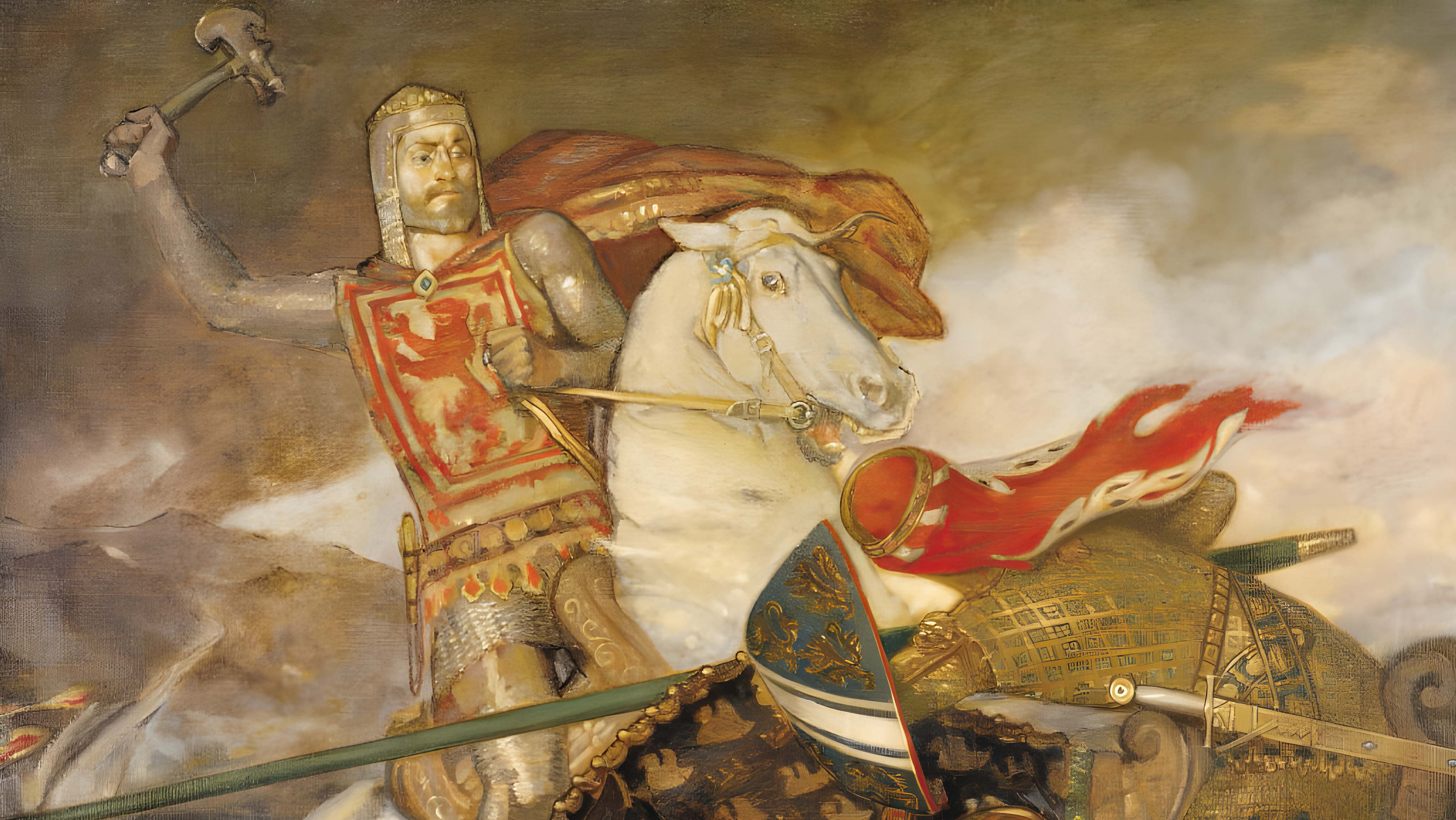
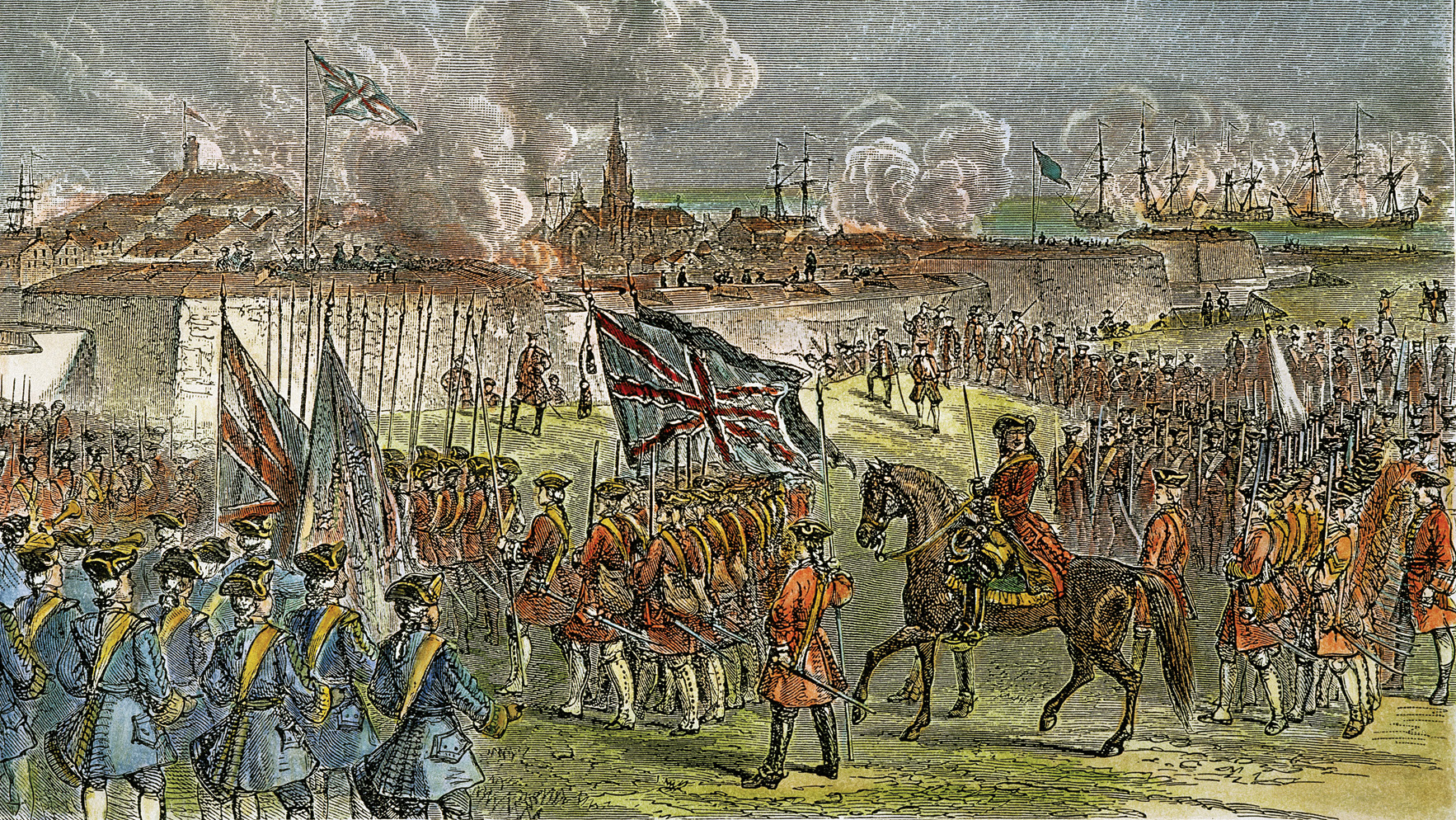
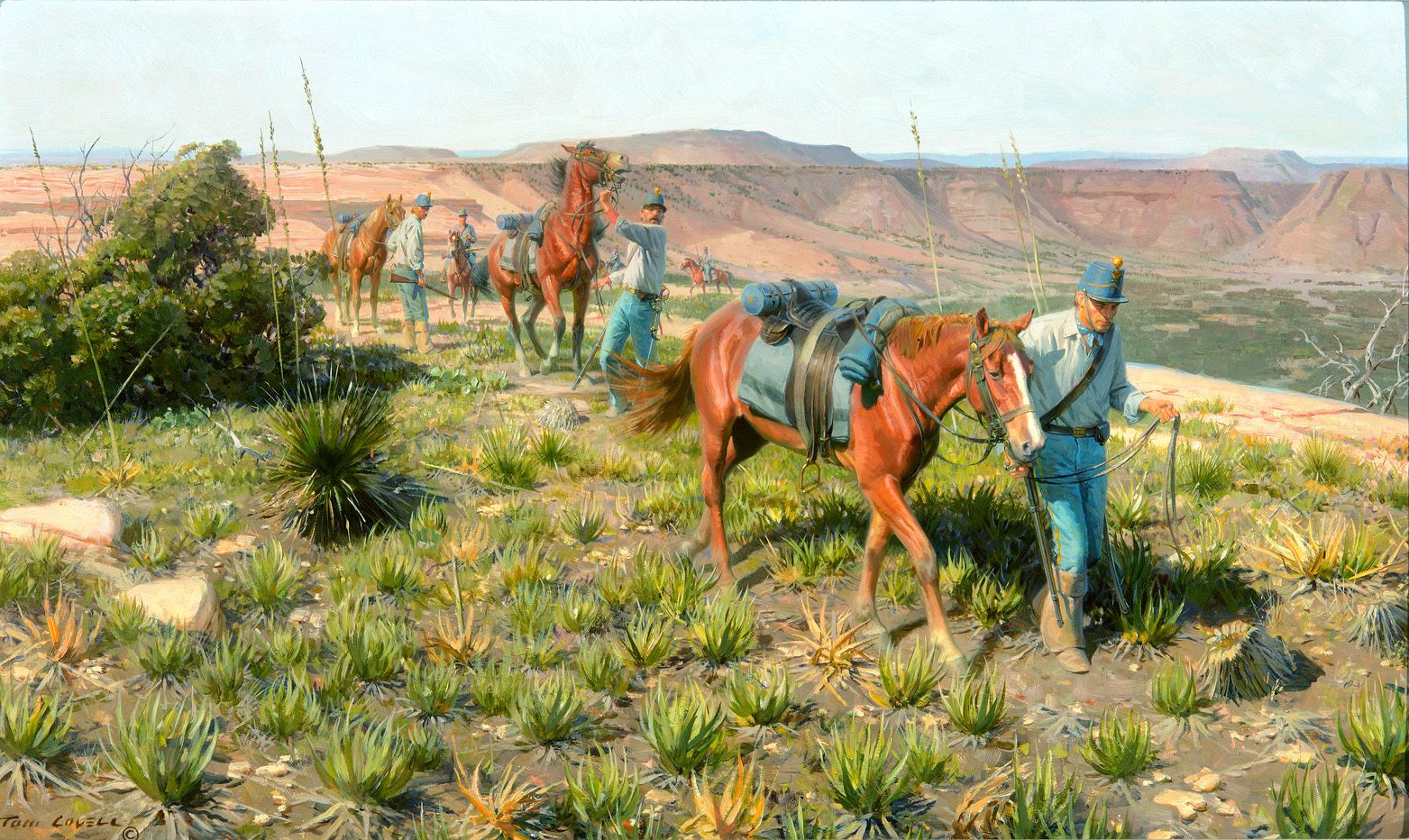
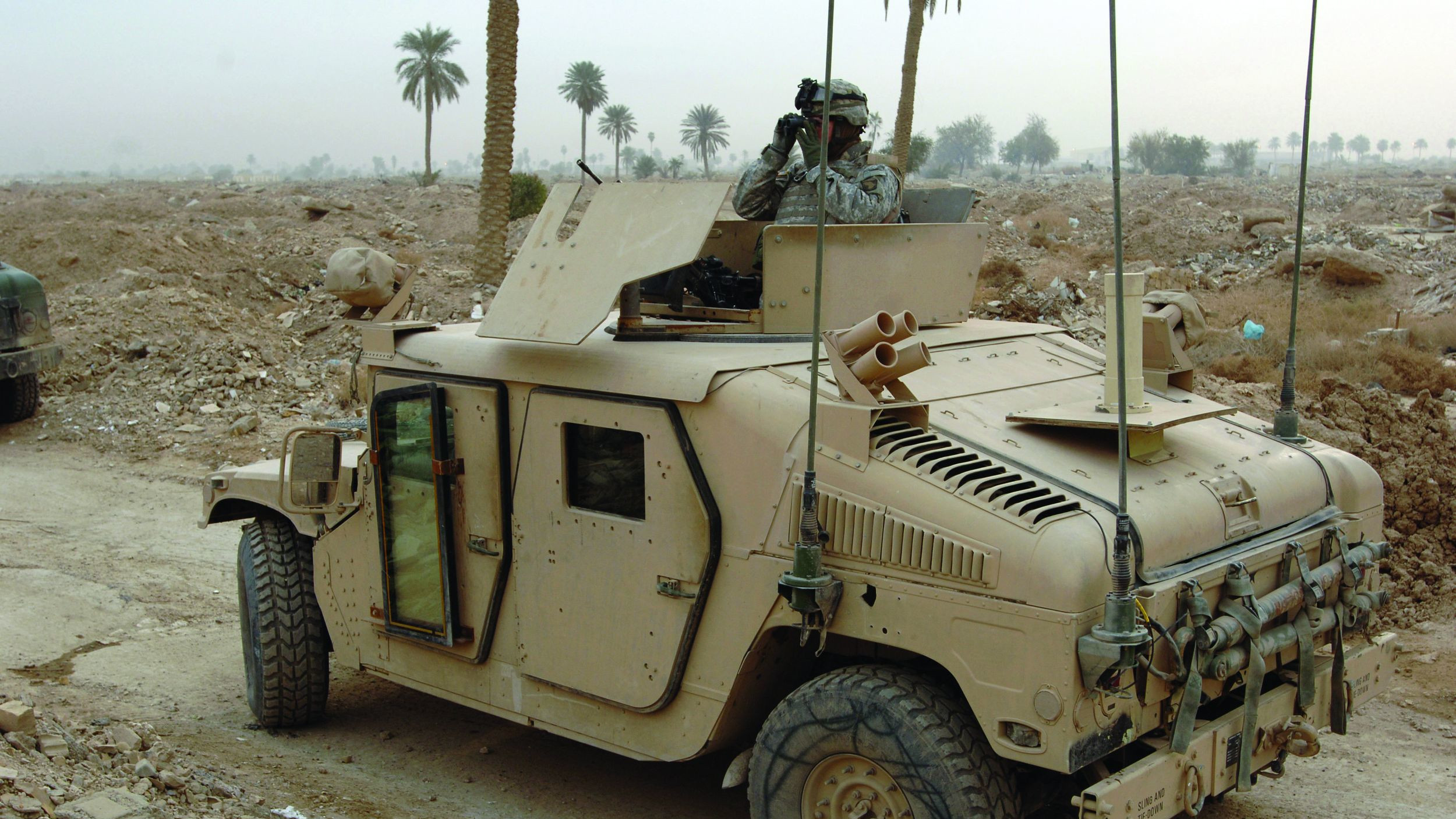
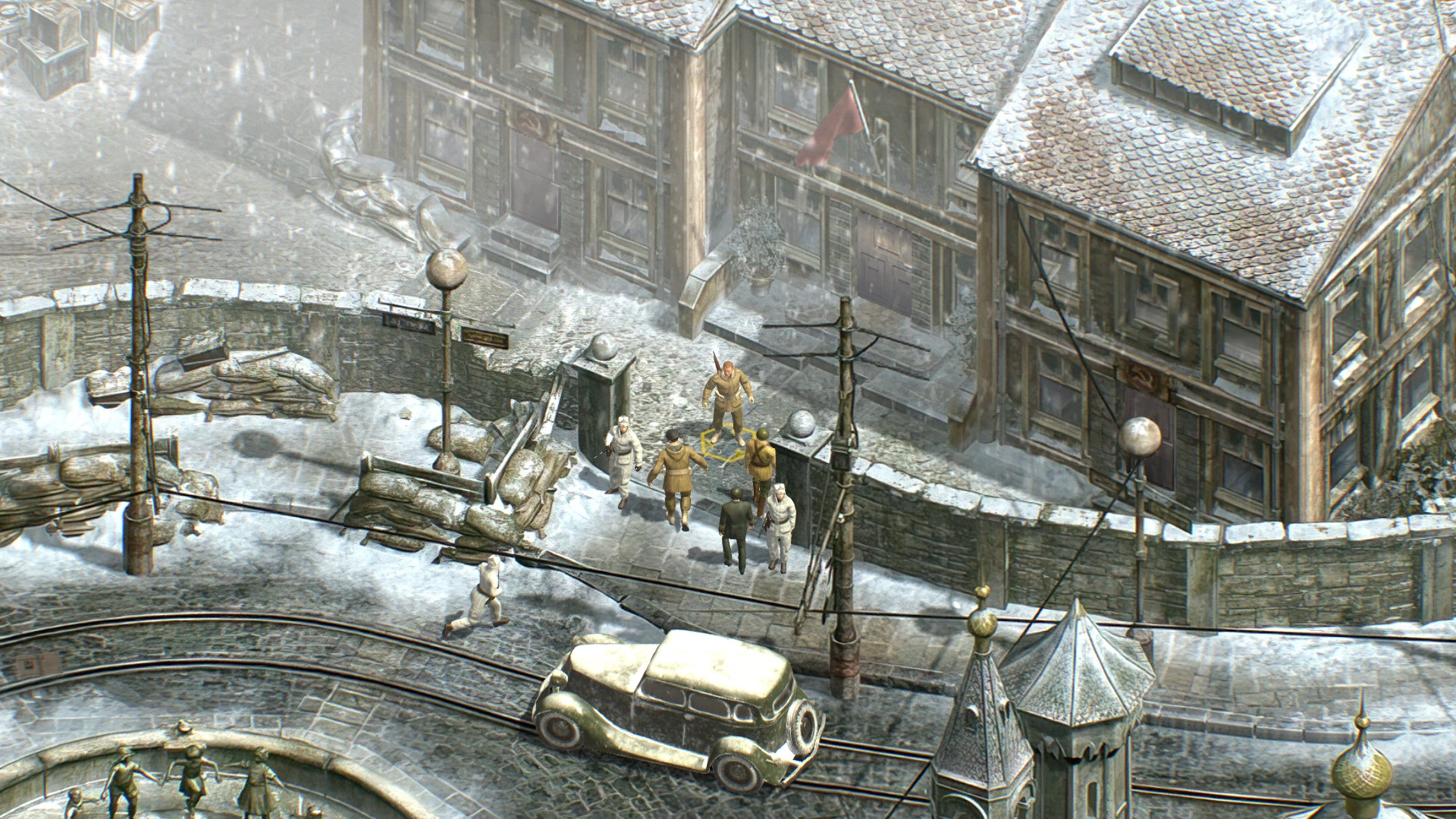

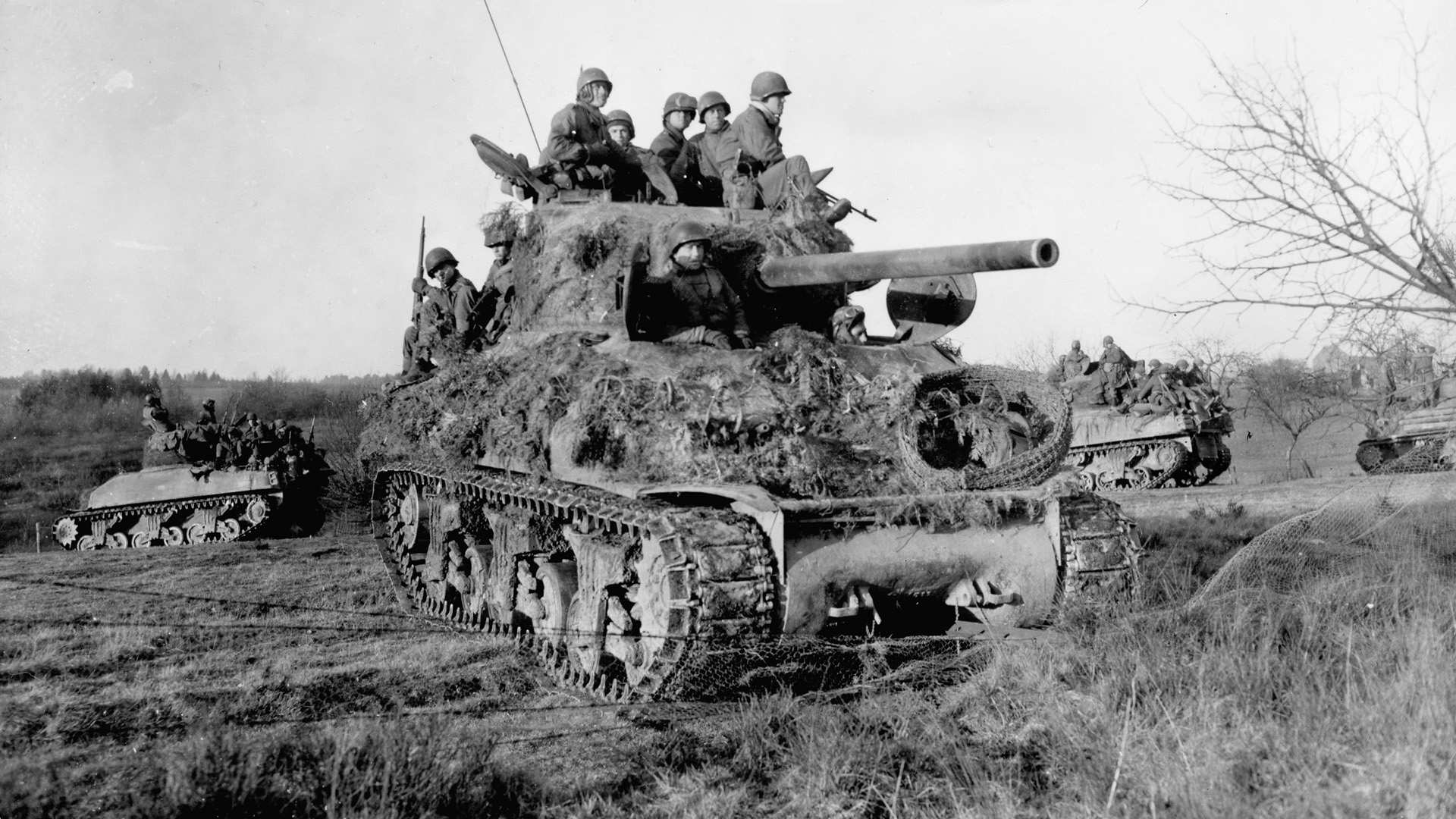
Join The Conversation
Comments
View All Comments